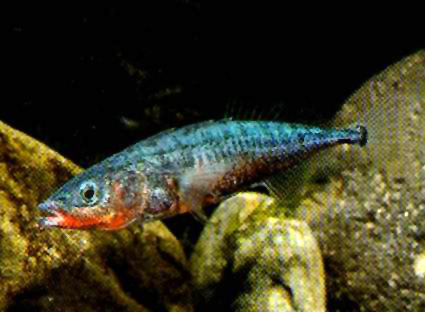PNAS:鱼能环境变迁后迅速进化

美国俄勒冈州立大学科研人员报告了三刺鱼在50年的时间里分化进化的证据。1964年阿拉斯加大地震抬升了威廉王子湾和阿拉斯加湾的岛屿,在这些岛屿上形成了新的淡水池塘。William Cresko及其同事分析了受到这场地震影响的3座岛屿上的三刺鱼的表现型与遗传变异,从而确定三刺鱼种群在过去50年里分化的程度。在抬升的岛屿,淡水三刺鱼在表现型和遗传上都与海洋三刺鱼不同。在地震前的池塘里的淡水鱼在遗传上与那些地震形成的池塘中的鱼不同,这提示地震后的种群并非来源于此前存在的淡水种群。在这些淡水种群中,这组作者识别出了5个在遗传上不同的群体,提示了来自海洋的祖先在淡水池塘中定居的多个独立的例子。对这些淡水种群的系统发生关系的重建进一步支持了这种假说。在地震造成的池塘中的种群的表现型变化的程度可以与在几千年前形成的大陆淡水鱼种群中观察到的变化相比拟。这些结果提示,淡水三刺鱼的进化的大部分发生在一个新环境定居后的50代里。
原文链接:
evolution of stickleback in 50 years on earthquake-uplifted islands
原文摘要:
How rapidly can animal populations in the wild evolve when faced with sudden environmental shifts? Uplift during the 1964 Great Alaska Earthquake abruptly created freshwater ponds on multiple islands in Prince William Sound and the Gulf of Alaska. In the short time since the earthquake, the phenotypes of resident freshwater threespine stickleback fish on at least three of these islands have changed dramatically from their oceanic ancestors. To test the hypothesis that these freshwater populations were derived from oceanic ancestors only 50 y ago, we GENErated over 130,000 single-nucleotide polymorphism genotypes from more than 1,000 individuals using restriction site-associated DNA sequencing (RAD-seq). Population genomic analyses of these data support the hypothesis of recent and repeated, independent colonization of freshwater habitats by oceanic ancestors. We find evidence of recurrent gene flow between oceanic and freshwater ecotypes where they co-occur. Our data implicate natural selection in phenotypic diversification and support the hypothesis that the metapopulation organization of this species helps maintain a large pool of genetic variation that can be redeployed rapidly when oceanic stickleback colonize freshwater environments. We find that the freshwater populations, despite population genetic analyses clearly supporting their young age, have diverged phenotypically from oceanic ancestors to nearly the same extent as populations that were likely founded thousands of years ago. Our results support the intriguing hypothesis that most stickleback evolution in fresh water occurs within the first few decades after invasion of a novel environment.
doi: 10.1073/PNAS.1512020112
作者:Emily A Lescak

